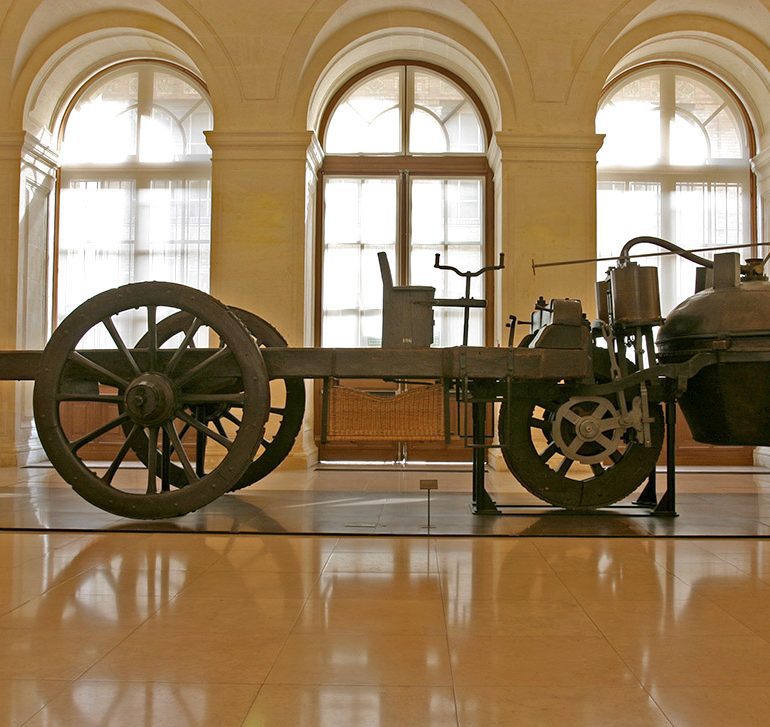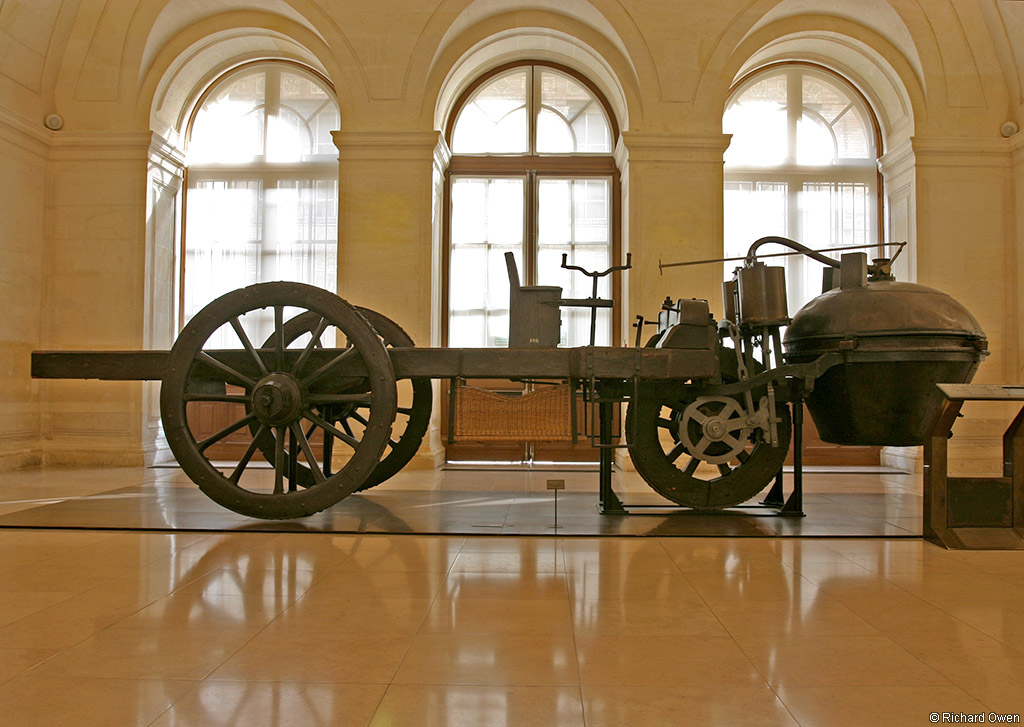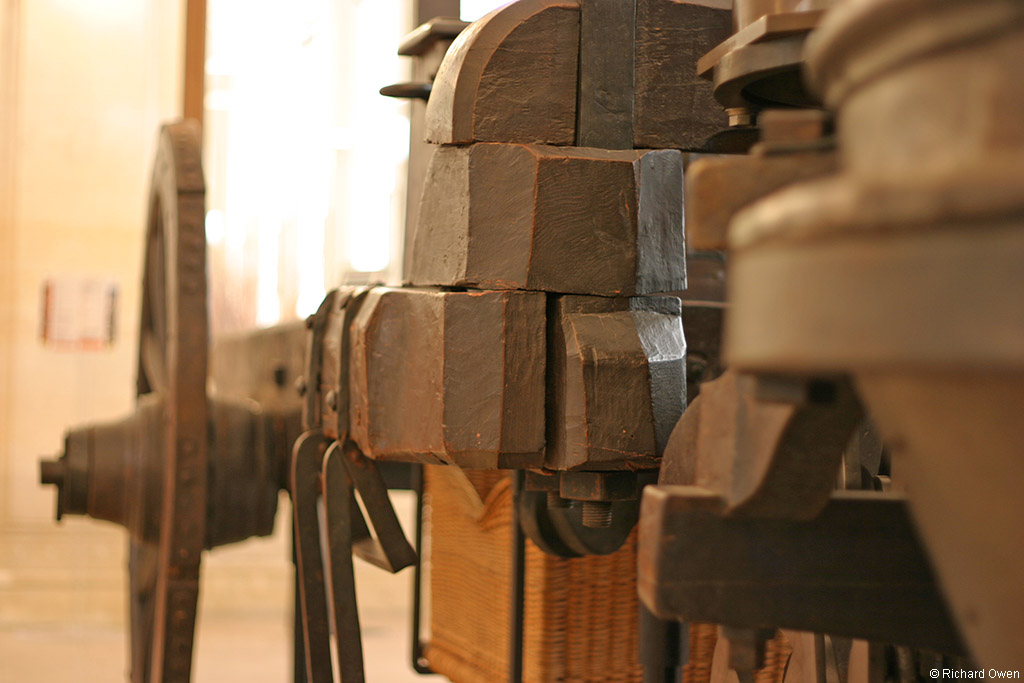1769 Cugnot Steam Tractor
The very first self-propelled vehicle that paved the way for every automobile after it was this steam car designed by Nicholas Joseph Cugnot in 1769. Like many industrial innovations, it was the product of a military agenda that was motivated by the French Minister of War, Etienne-Francois. He probably wanted a means of hauling large artillery without the fuss and smell of horses.
So, Cugnot and assistant army mechanic Brezin built the first car at the Paris Arsenal around a basic wooden frame. Their challenge was to convert the lateral motion of a steam engine into the rotational energy required for locomotion. To do this, they placed the engine and its boiler overtop and ahead of the front wheel. The basic idea was to use two pistons and push notched discs on each side of the front wheel. Since the whole driving assembly had to pivot with the wheel, steering must have been very heavy and the high-ratio tiller gear set probably did little for the unwieldy design.
Despite its setbacks, the first steamer could tow five tons, reach speeds of up to 4kph and last 15 minutes before needing to reheat and build up pressure. The initial tests were favorable and a four passenger version was made.
Probably the biggest setback, aside from the slow turning, was the steamer’s inability to stop. For some reason Cugnot overlooked one of most crucial aspects of safety, and with a total lack of any braking system, it should be no surprise that his Steamer became the first motor vehicle to suffer an accident. This incident and lack of funds was enough to scrap the program in 1771. Afterwards, other inventors started making their own steam cars, but with more failures than successes. The biggest breakthrough was Gottlieb Daimler’s internal combustion engine which didn’t arrive until 115 years after the Cugnot’s demise.
All the Cugnot steamers were thought to be lost during the French revolution until the first prototype was discovered and preserved in the 1800. It ended up in the Musee des Arts et Metiers in Paris, France where it currently remains as the feature exhibit of their collection: www.arts-et-metiers.net
In Detail
| engine | 2-Cylinder Steam |
| position | Front Transverse |
| body / frame | Wooden Frame |
| driven wheels | FWD, Conrod on Notched Discs |
| wheel type | Wooden w/Steel Inserts |
| f brake size | mm / in |
| r brake size | mm / in |
| gear ratios | :1 |
| top speed | ~4 kph / 2.5 mph |













